Meet the Wolves, Serpent, and Celestial Beings of Norse Mythology
When we think of Norse mythology, names like Thor and Odin quickly come to mind — thanks to history lessons, pop culture, and even the days of the week being named after them. But Norse mythology is far richer than just the Aesir and Vanir gods. There are other powerful beings, both revered and feared, who shaped the cosmos and controlled forces like fate, time, and the very cycle of life and death.
This list highlights 11 of these fascinating creatures and entities — beings that exist outside the typical pantheon of gods but are crucial to the myths and stories that define Norse legend. Some may sound familiar, while others dwell in the shadows, waiting for their moment at Ragnarok.
Sol – The Sun Goddess
Sol is the personification of the Sun, driving her chariot across the sky, pulled by two mighty horses. But her journey is a perilous one — she’s relentlessly chased by the wolf Sköll, who is destined to catch and devour her when Ragnarok arrives. Occasionally, Sköll gets close enough to take a bite, causing a solar eclipse.
Sol is the sister of Mani, the Moon, and the daughter of Mundilfari. Before her death at Ragnarok, Sol will bear a daughter who will take up her path across the heavens. Appropriately, Sunday is named after her.
Mani – The Moon God
Mani, Sol’s brother, personifies the Moon. Like his sister, he rides across the sky in a chariot, but his pursuer is the wolf Hati. When Hati nearly catches him, a lunar eclipse occurs.
Mani is often depicted traveling with two mysterious children, Hjúki and Bil, whose purpose and symbolism remain unclear. Monday, fittingly, is named after him.
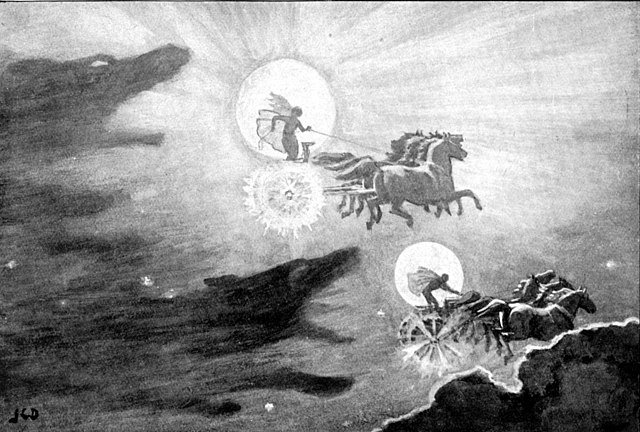
Nott – The Night
Nott is the embodiment of night, riding her horse Hrímfaxi to cloak the world in darkness. She’s the mother of Jord (the Earth), and her ancestry connects her to several important figures in Norse lore.
Through her third marriage — to the god Dellingr — Nott gave birth to Dagr, the personification of Day.
Dagr – The Day
Dagr brings daylight to the world, riding his shining horse, Skinfaxi. In some versions, he is the son of Nott and Dellingr, while other accounts name Jord (the Earth) as his mother. Regardless, his role is clear: to follow Nott and illuminate the sky for all mankind.
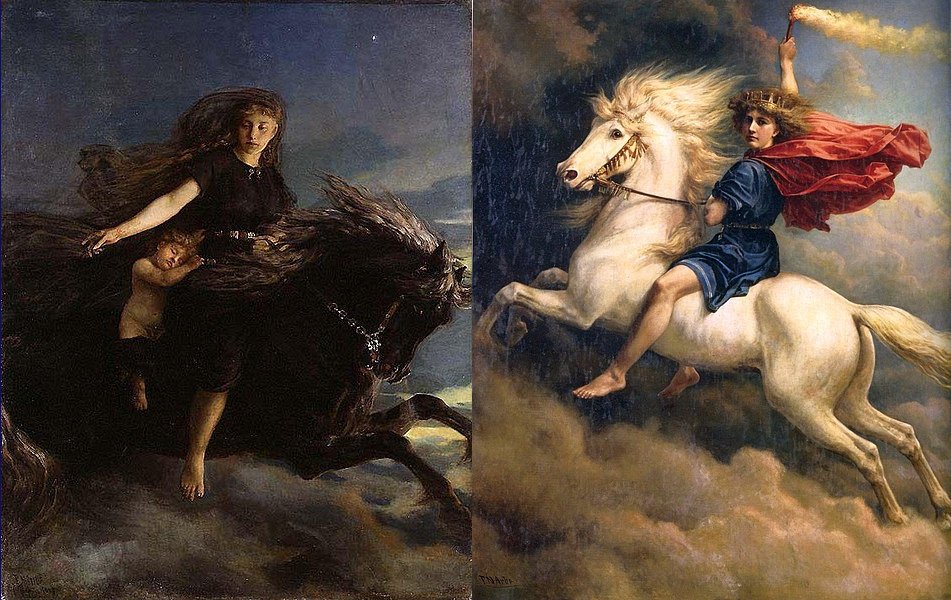
The Norns – Weavers of Fate
The Norns are mysterious, powerful beings who live at the base of Yggdrasil, the World Tree. They weave the fate of gods and mortals alike, controlling the threads of destiny itself. While there are many Norns, the three most famous are Urd (the past), Verðandi (the present), and Skuld (the future).
Their power over fate makes them some of the most feared and respected beings in all of Norse mythology.
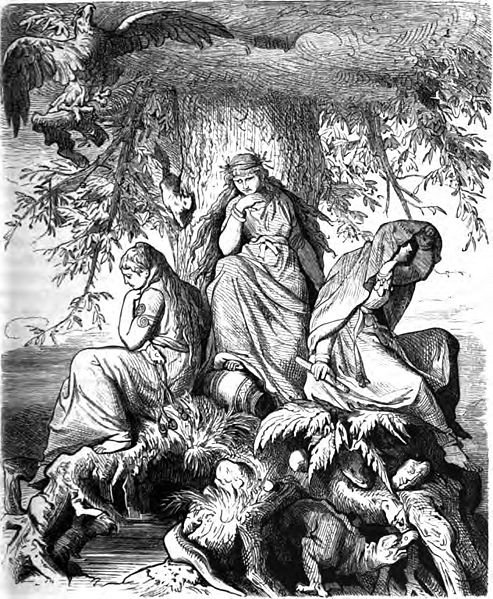
The Valkyries – Choosers of the Slain
The Valkyries are divine warrior maidens who guide fallen heroes to Valhalla, where they become einherjar — Odin’s elite warriors, training for the final battle at Ragnarok.
Both beautiful and fearsome, Valkyries also serve mead to the einherjar and, in some stories, become lovers of mortal heroes. They are sometimes accompanied by ravens, adding to their eerie presence on the battlefield.
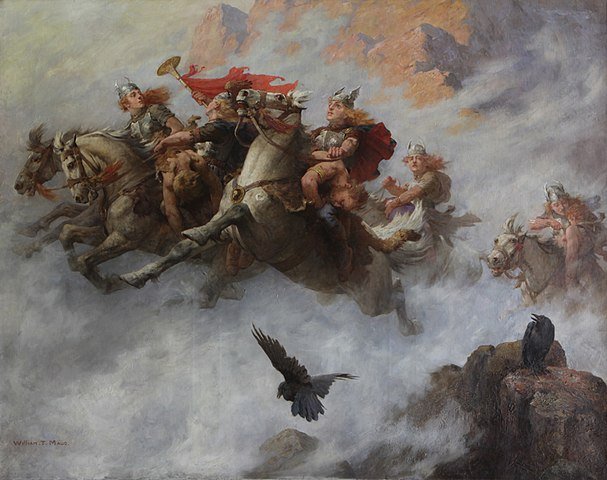
Fenrir – The Great Wolf
Fenrir, the monstrous wolf, is one of Loki’s children and a figure of prophecy and dread. Despite his intelligence, Fenrir’s violent nature made him too dangerous to roam free, so the gods bound him with the magical chain Gleipnir — a feat that cost the god Týr his hand.
At Ragnarok, Fenrir will break free, kill Odin, and ultimately be slain by Odin’s son, Vidar.
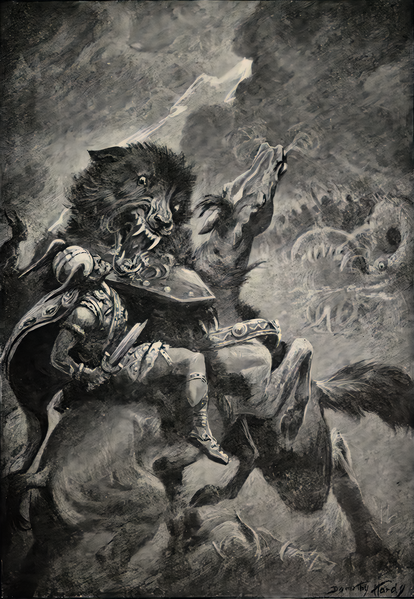
Jörmungandr – The World Serpent
Another child of Loki, Jörmungandr is a colossal serpent who encircles the world, biting his own tail. Cast into the sea by Odin, Jörmungandr grows so large that he spans Midgard itself.
He is destined to face Thor during Ragnarok, where they will kill each other — the serpent’s venom taking the god’s life after the fatal blow.
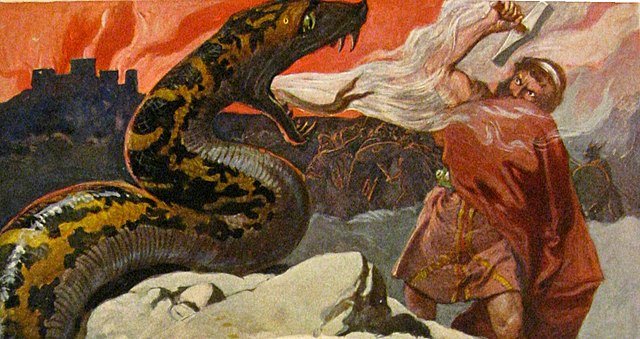
Sköll & Hati – The Celestial Wolves
Sköll (“Mocker”) and Hati (“Hater”) are the sons of Fenrir. They spend eternity chasing Sol and Mani across the sky, trying to devour them. When they finally succeed, the world will plunge into darkness, signaling the beginning of Ragnarok.
Born in the Ironwood at the edge of the world, these wolf brothers are relentless harbingers of doom.

Surtr – The Fire Giant
Surtr, a primordial fire jotunn, existed even before the gods themselves. At Ragnarok, he will lead the fiery forces of Muspelheim across Bifrost to attack Asgard. Armed with a flaming sword, Surtr is destined to slay the god Freyr before unleashing a firestorm that consumes all nine realms — ending the world as it is known.
Even Surtr himself will perish in the flames, clearing the way for a new world to rise from the ashes.

Huginn and Muninn – Odin’s Ravens
Huginn and Muninn are a pair of mystical ravens that serve Odin, the Allfather. Every day, they soar across the Nine Realms, gathering knowledge and bringing vital information back to their master. These ever-watchful birds perch upon Odin’s shoulders as he sits in his high seat, Hlidskjalf, in Valhalla—earning him the title The Raven God.
Huginn, whose name means thought, represents Odin’s intellectual pursuits. He observes and absorbs all that he sees, whispering his findings into Odin’s ear. Muninn, meaning memory, ensures that knowledge is preserved, recalling past events, wisdom, and insights.
In Norse culture, ravens were often linked to war and death, as they fed on the fallen in battle. This connection extended into later Norwegian folklore, where people believed the cries and behavior of ravens foretold death, misfortune, or war.
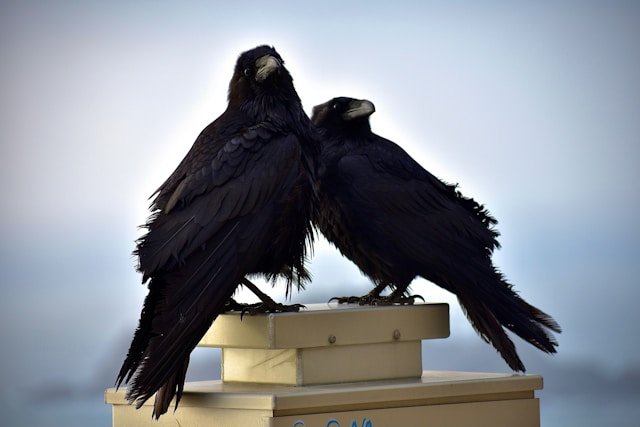
Tanngrisnir and Tanngnjóstr – Thor’s Goats
Tanngrisnir (Teeth Grinder) and Tanngnjóstr (Teeth Snarl) are the mighty goats that pull Thor’s chariot across the sky. Their arrival is impossible to miss—when they move, sparks and lightning erupt from the wheels, and the rolling thunder echoes across the heavens.
According to the Prose Edda, Thor is able to feast upon his goats and later resurrect them using his hammer, Mjölnir.
However, during one such meal at a peasant’s home, a boy named Thjalfi broke one of the goat’s bones to suck out the marrow. When Thor revived his goats the next day, one was left with a limp. Enraged, Thor demanded to know who was responsible. Upon Thjalfi’s confession, Thor took him and his sister Röskva into his service as repayment.
The identity of the injured goat remains unknown, as does the permanence of its injury.
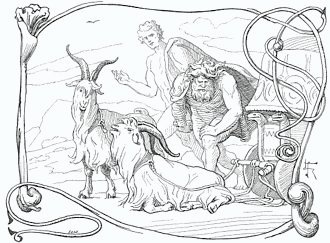
Sleipnir – Odin’s Eight-Legged Steed
Sleipnir, Odin’s legendary horse, is the swiftest and most powerful of all steeds. Gray in color and possessing eight legs, Sleipnir carries Odin across the worlds, even into the realm of the dead—a feat no other living creature can achieve.
Sleipnir’s origins trace back to a cunning deception. A master builder once offered to construct a mighty wall around Asgard in a single winter. In return, he demanded the Sun, Moon, and the goddess Freyja as payment. The gods, believing the task impossible, agreed—but the builder had an advantage: his extraordinary horse, Svadilfari, whose immense strength and speed made rapid progress.
As the deadline neared, the gods feared losing their wager. They ordered Loki to intervene. Taking the form of a beautiful mare, Loki lured Svadilfari away, preventing the wall’s completion. In the aftermath, Loki gave birth to a strange and powerful foal—Sleipnir—who was gifted to Odin.
Like Odin himself, Sleipnir is associated with mystery and death. His role is particularly significant in the myth of Balder’s death, where he carries a messenger into the underworld in a desperate attempt to bring Balder back to life.
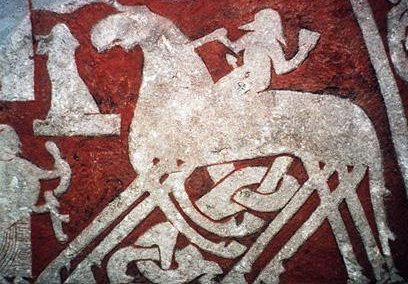
Geri and Freki – Odin’s Loyal Wolves
In Norse mythology, Geri and Freki are the two mighty wolves that accompany Odin. Their names reflect their nature—Geri is often interpreted as “the greedy one” or “the ravenous one,” while Freki comes from the Proto-Germanic word frekaz, meaning “covetous” or “avaricious.”
According to legend, Odin shares all the food from his table with Geri and Freki, as he himself requires no sustenance—for to him, wine serves as both meat and drink. Much like his ravens, Huginn and Muninn, these fierce wolves serve Odin, roaming the world to gather knowledge and bring back vital information to their master.

Draugr – The Restless Dead
The draugr is a terrifying undead being from Norse sagas and folklore. Unlike ghosts, these revenants possess physical, decaying bodies and often haunt their own burial mounds or ancient palaces, guarding treasures hidden within.
Described as grotesque and unnaturally strong, draugr are usually black or blue-skinned, exuding the stench of decay. Many possessed supernatural abilities (trollskapr), including shape-shifting, weather manipulation, and even glimpses into the future.
While modern depictions, such as in Skyrim or God of War, portray draugr as mindless zombies, the original myths suggest they were more complex entities—vengeful and often cunning. Norwegian folklore continued to depict them as omens of death, reinforcing their eerie presence in Scandinavian tradition.
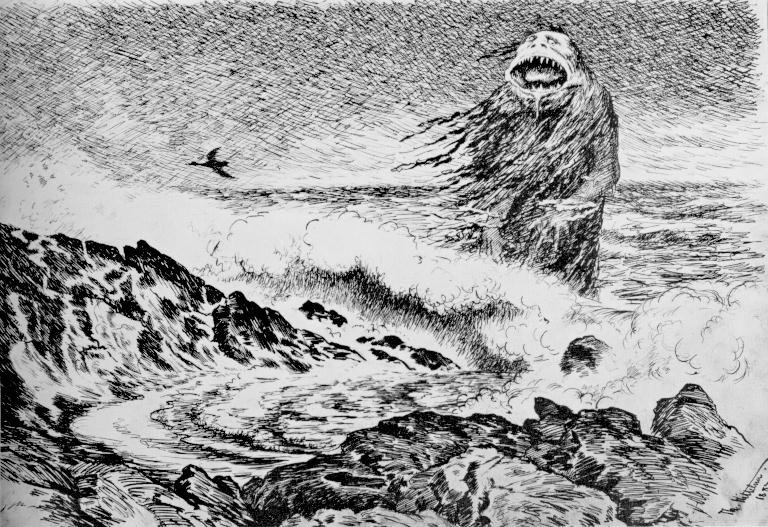
Want to learn more? Explore more stories behind these beings and uncover the epic tapestry of Norse mythology — Check out Norse Mythology Gods and Goddesses
